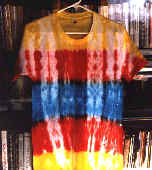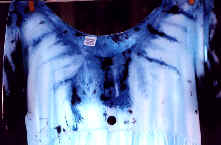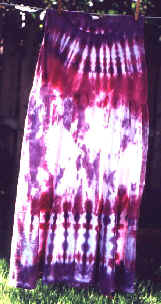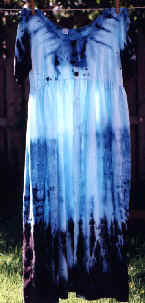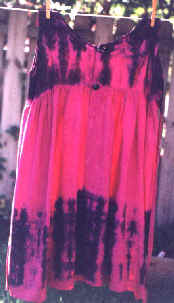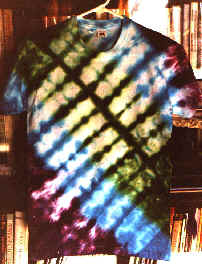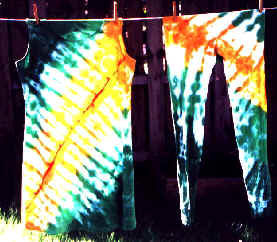| In order to achieve clean, sharp lines most of the tie-dye that I do is pleated rather than "scrunched" together. Keeping the pleats regular and even makes it easier to control where your colors and designs will be when you're done. Also I tie the garments by wrapping the pleats with dental floss rather than rubberbands. The floss stays where you want it and you can make it tighter (when wrapping) than the bands without disturbing your folds. | |
| Straight
across The most basic is simple pleating; either across the entire garment, along the hem or with a slight curve around a neckline. |
|
|
|
|
| All three of these dresses were deeply pleated along the hem. | |
